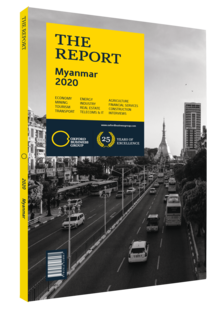Increased activity in Myanmar's transport sector to encourage economic development and private investment
In a bid to address an existing infrastructure deficit, Myanmar is ramping up activity in the transport sector, which is expected to encourage further economic development. In March 2019 State Counsellor Daw Aung San Suu Kyi and Thailand’s Prime Minister PrayutChan-o-cha officially opened the second Thai-Myanmar Friendship Bridge, two decades after the first one was built in 1997. The Thai-funded bridge in Myanmar’s east, which connects the city of Myawaddy with Thailand’s Mae Sot district over the Meoi River, cost around $126m to construct and is expected to improve both transport and trade links between the countries.
This development follows two other bridge projects in Yangon: the Yangon-Thanlyin Bridge, for which a groundbreaking ceremony was held in February 2019, and a road bridge linking the city to the Dala township, the construction of which commenced in late 2018.
Greater Capacity
The “Myanmar Transport Policy Note” report, released by the Asian Development Bank (ADB) in 2016, estimated that the country needs some $60bn in transport investment between 2016 and 2030. Highlighting the shortfall, the ADB stated that around 20m people were without basic road access, while 60% of highways and most rail lines were in poor condition. Even though the national paved highway network had increased by 35% between 2012 and 2016, the number of vehicles in the country had doubled and travel within Yangon had become two to three times slower, with public transport operators losing 35-65% of the market.
To improve the situation, the government launched the National Transport Master Plan in 2014, which identified 10 main corridors crucial to improving the country’s transport network. One of the major links in this plan is the upgrade of the $3bn, 620-km Yangon-Mandalay rail line. Work on the first phase of the project, financed in part by development funding from Japan, began in 2018 and is due for completion by 2023.
Furthermore, work also started in 2018 on the Yangon Circular Railway upgrade, a 46-km, 39-stop commuter link that transports some 77,000 people in the city each day. The project, financed through government budget and a $250m loan from the Japan International Cooperation Agency, is expected to cut travel time on the loop from three hours to two hours once completed in 2022 or 2023. “The circular railway is the initial step towards shifting from a car-based city to one based on a widespread public transport network,” Masayuki Karasawa, chief representative of JICA’s Myanmar operations, told OBG. “At present, some 60% of the public travel by bus, 20% in taxis, and only 1% take the train. We are working to grow rail’s share of the transport mix to around 30%.”
Opportunities
The extensive project pipeline is also set to provide significant opportunities to foreign investors. Following the directives of the Sustainable Development Policy 2018-30, the country’s long-term strategy outlining overall economic growth, the government is increasingly turning towards public-private partnerships (PPPs) to deliver major transport projects.
“Due to the scale of the capital and long tenors required, local banks often have challenges financing large infrastructure projects, hence bankable PPPs to attract international financing remain critical in bringing these projects to life,” U Han Thein Lwin, CEO of Shwe Taung Engineering and Construction, part of the Shwe Taung Group, told OBG.
PPPs are seen as an efficient and cost-effective way to finance and construct large-scale infrastructure projects, while leveraging the skills and expertise of leading international companies. An example of such a project is the Yangon Elevated Expressway, a 47.5-km ring road around the city that will connect Yangon Port with Yangon International Airport, the Yangon-Mandalay Expressway and Mingaladon Industrial Park. In December 2018 the Ministry of Construction announced that it had shortlisted 10 local and foreign companies to carry out the first phase of the project, with a final decision still to be announced as of December 2019.
You have reached the limit of premium articles you can view for free.
Choose from the options below to purchase print or digital editions of our Reports. You can also purchase a website subscription giving you unlimited access to all of our Reports online for 12 months.
If you have already purchased this Report or have a website subscription, please login to continue.

